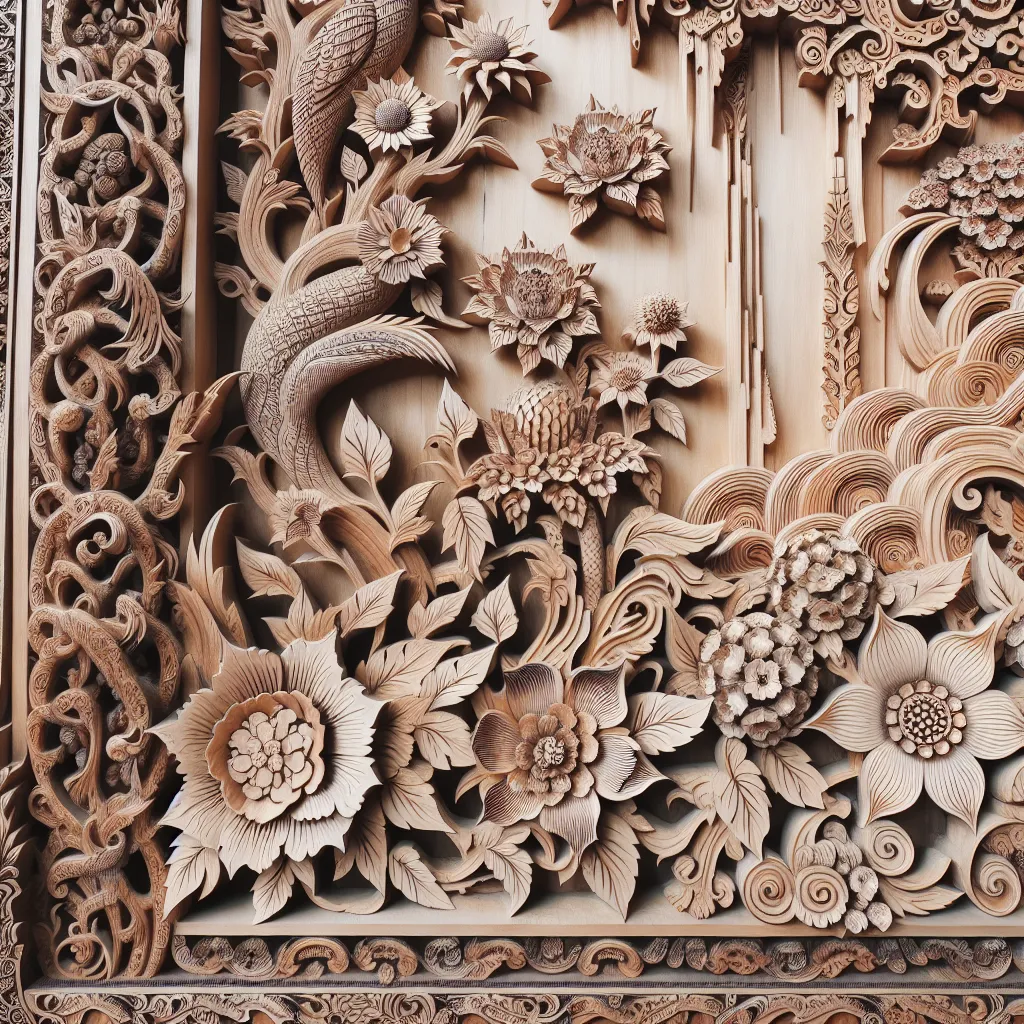Origins of Ornamentation in Art and Architecture
The use of decorative ornaments in art and architecture can be traced back to ancient civilizations, where it served as a means of expression and communication. The origins of ornamentation can be found in the intricate designs of ancient Sumerian and Egyptian architecture, where motifs such as geometric patterns, floral designs, and symbolic images were used to adorn temples, palaces, and tombs.
These ornamental elements not only added visual appeal to the structures but also held significant cultural and religious meanings. In many cases, the motifs used in ornamentation were inspired by the natural world, reflecting the beliefs and values of the society that created them. For example, the lotus flower in ancient Egyptian art symbolized rebirth and the sun, while the use of geometric patterns in Islamic art reflected the mathematical precision and complexity of the universe.
As civilizations advanced, ornamentation evolved alongside them, adapting to different artistic styles and technological advancements. The intricate carvings on Gothic cathedrals, the delicate filigree work in Islamic architecture, and the elaborate motifs in Baroque art all showcase the diverse forms that ornamentation has taken throughout history.
Today, the tradition of decorative ornamentation continues to thrive in both art and architecture, with contemporary artists and designers drawing inspiration from historical ornamentation while incorporating modern techniques and materials. The rich history of ornamentation serves as a testament to its enduring significance as a form of artistic expression and cultural identity.
Evolution of Decorative Ornaments in Different Cultures
Decorative ornaments have played a significant role in the expression of cultural identity and artistic creativity throughout history. The evolution of decorative ornaments in different cultures reflects the diverse influences, artistic styles, and craftsmanship that have shaped the art of ornamentation. From ancient civilizations to modern-day societies, decorative ornaments have adorned various objects, structures, and artworks, serving as a visual representation of cultural values and aesthetics.
In ancient Egypt, decorative ornaments such as the lotus flower motif and intricate hieroglyphic patterns adorned temples, tombs, and artifacts, symbolizing religious beliefs and the importance of the afterlife. The use of geometric and floral patterns in Islamic art and architecture showcased the influence of Islamic teachings prohibiting the portrayal of living beings, leading to the development of elaborate arabesque designs and intricate calligraphy as prominent decorative elements.
The art of ornamentation in Asian cultures, particularly in China and Japan, is characterized by a harmonious blend of symbolism, nature-inspired motifs, and meticulous craftsmanship. Traditional Chinese motifs like the dragon, phoenix, and auspicious symbols were widely incorporated into decorative ornaments, reflecting cultural beliefs and societal values. Meanwhile, Japanese decorative arts, such as the art of kintsugi (the art of repairing broken pottery with gold or silver lacquer), exemplify the Japanese aesthetic of embracing imperfections and honoring the passage of time through decorative techniques.
In Europe, the evolution of decorative ornaments was heavily influenced by various artistic movements, architectural styles, and cultural exchanges. The intricate floral motifs of the Renaissance, the opulent Rococo ornaments, and the geometric abstractions of Art Deco are just a few examples of how decorative ornaments evolved in response to changing artistic trends and societal contexts.
Across different cultures, decorative ornaments have continuously evolved, reflecting the evolving tastes, beliefs, and artistic innovations of each society. The rich tapestry of decorative ornamentation across cultures provides invaluable insights into the interconnectedness of artistic expression and cultural identity.
The Role of Ornamentation in Contemporary Design
The role of ornamentation in contemporary design has evolved significantly, with a shift towards minimalism and simplicity in the past few decades. However, ornamentation still plays a crucial role in adding depth, texture, and visual interest to modern designs. In today’s context, decorative ornaments are used not only for embellishment but also as a means of expressing cultural heritage, individuality, and unique brand identities.
Contemporary designers often incorporate elements of traditional ornamentation into their work, reinterpreting them in a way that resonates with current aesthetic sensibilities. This fusion of old and new creates a dynamic visual language that speaks to the complexities of the modern world while honoring the rich history of decorative arts.
Moreover, ornamentation in contemporary design serves as a form of storytelling, allowing designers to communicate narratives and evoke emotional responses through their creations. Whether it’s through intricate patterns, symbolic motifs, or innovative material applications, ornamentation becomes a powerful tool for conveying meaning and sparking connections with the audience.
As the boundaries between art, design, and craft continue to blur, the role of ornamentation in contemporary design expands beyond mere decoration. It becomes a vehicle for cultural dialogues, a reflection of individual and collective identities, and a celebration of craftsmanship in the digital age. Through thoughtful and intentional use, decorative ornaments breathe life and soul into modern designs, making them resonate on a deeper and more profound level.
Techniques and Materials Used in Ornamental Art
The art of ornamentation has a rich history, with decorative ornaments being crafted using a wide range of techniques and materials. Throughout the ages, artisans have utilized various methods to create ornamental art, including carving, casting, engraving, and inlaying. These techniques have been applied to materials such as wood, metal, stone, glass, and ceramics, resulting in an astonishing array of decorative objects.
Carving is one of the oldest and most widely used techniques in ornamental art. Artisans meticulously sculpt designs into materials such as wood, stone, or ivory, creating intricate patterns and motifs. This technique allows for precise detailing and the creation of three-dimensional forms, adding depth and texture to the ornamentation.
Casting is another prevalent method in ornamental art, particularly in the creation of metal ornaments. This process involves pouring molten metal into a mold, allowing artisans to replicate detailed designs with precision. The result is often ornate and finely crafted decorative elements that adorn furniture, architectural structures, and various objects.
Engraving is a technique that involves incising designs onto a surface, such as metal or glass, using specialized tools. This method allows for the creation of intricate patterns, delicate lines, and finely detailed imagery, adding an elegant touch to ornamental pieces.
Inlaying, also known as marquetry or intarsia, is a decorative technique that involves setting pieces of material into a base to form patterns or images. This method is commonly employed in woodworking, with artisans using contrasting woods, metals, or other materials to create visually striking designs.
The materials used in ornamental art vary widely, offering distinct characteristics and aesthetic qualities. Wood, with its natural warmth and versatility, has been a favored material for ornamental carving and inlay work. Metals like bronze, silver, and gold have been cherished for their luster and malleability, allowing for exquisite casting and engraving. Stone, including marble and jade, has been prized for its durability and rich coloration, often used in architectural ornamentation.
In summary, the art of ornamentation encompasses a diverse array of techniques and materials, each contributing to the intricate beauty and craftsmanship of decorative ornaments. Throughout history, artisans have harnessed these methods and materials to create enduring works of art that continue to captivate and inspire.

